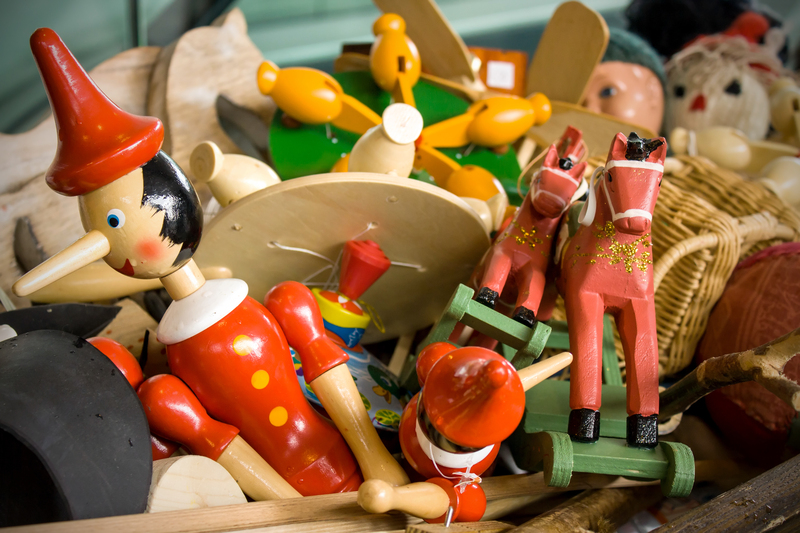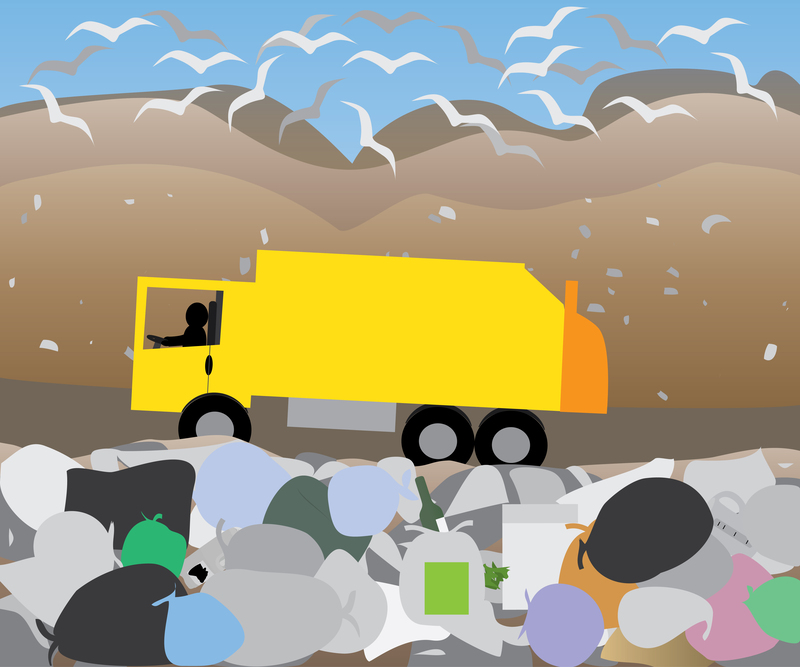Waste Not: The Right Process for PPE Disposal
Personal Protective Equipment (PPE) has become an integral part of daily life in healthcare, manufacturing, construction, and especially since the COVID-19 pandemic, in public spaces. While its use safeguards our health, improper PPE disposal can severely harm the environment and public safety. Mastering the right process for disposing PPE is crucial for individuals, organizations, and the planet. This in-depth guide outlines the most responsible and efficient ways to manage PPE waste, ensuring you don't just use PPE, but dispose of it the right way.
Understanding the Importance of Proper PPE Waste Management
The surge in PPE use globally has generated an unprecedented amount of waste. Items such as masks, gloves, gowns, and face shields, if not disposed of correctly, end up in landfills, water bodies, and even urban streets. This not only presents an environmental hazard but also escalates public health risks due to potential contamination.
Proper PPE disposal processes are essential for:
- Preventing contamination in communities and workplaces.
- Protecting sanitation workers from exposure to hazardous materials.
- Reducing landfill overload and environmental pollution.
- Promoting recycling and resource recovery where possible.
What Constitutes PPE Waste?
PPE waste refers to any item used to protect the wearer from health or safety risks, which has become unsuitable for further use. The most commonly discarded PPE items include:
- Masks (surgical, N95, and cloth)
- Disposable gloves (nitrile, latex, vinyl)
- Protective gowns and aprons
- Plastic face shields or goggles
- Shoe and head covers
Once contaminated or soiled, these items should be managed as potentially infectious waste, necessitating specific disposal methods.

The Environmental Impact of Improper PPE Disposal
The improper disposal of PPE has become a global environmental issue. Approximately 129 billion face masks and 65 billion gloves are used globally every month, according to recent estimates during worldwide health crises. When these single-use items are thrown away carelessly, they:
- End up in oceans and waterways, harming marine life and disrupting ecosystems.
- Contribute to microplastic pollution as they degrade slowly, leaching harmful chemicals.
- Increase landfill volumes, straining municipal waste management systems.
- Pose a risk to wildlife, which may ingest or become entangled in discarded PPE.
Learning the correct PPE waste process is not just a matter of hygiene--it's key to environmental stewardship.
Step-By-Step Guide: The Right Process for Personal Protective Equipment Disposal
Whether you are an individual, business, or healthcare provider, following a systematic approach to PPE waste disposal is necessary. Here's how to do it right:
1. Segregate PPE Waste from Other Trash
Place used PPE items in designated bins or bags, separate from general waste and recyclables. This reduces the risk of cross-contamination and ensures that refuse handlers can identify hazardous materials easily.
- Use color-coded bins (e.g., yellow or red) specifically for PPE.
- Line bins with double-bagged liners to prevent leaks.
- Close bins securely to avoid accidental exposure.
2. Handle With Care: Protect Yourself and Others
- Always wear new protective gloves and, if necessary, a mask when handling used PPE.
- Avoid touching your face and wash your hands thoroughly after disposing of PPE.
- Replace gloves and sanitize your hands before touching surfaces or other items.
3. Disinfection and Decontamination (For Reusable PPE)
Not all PPE is single-use. Items such as face shields, goggles, or cloth masks can be disinfected and reused following proper procedures:
- Clean with soap and water, followed by an effective disinfectant for at least 1 minute.
- Allow items to dry completely before reusing or storing.
- Follow manufacturer guidelines for maximum reuse cycles.
Single-use PPE should never be washed or reused; always dispose of such items according to the right process for PPE disposal.
4. Safe Bagging and Storage Prior to Collection
- Seal PPE waste in leak-proof bags or containers.
- Use tie-wraps or adhesive strips to secure bag openings.
- Clearly label the bag/container as "PPE Waste" or "Contaminated Waste."
- Store away from regular waste until pickup or disposal.
5. Choose the Correct Disposal Method for PPE Waste
The method of PPE disposal depends on the type and level of contamination:
- General Public (Non-medical/Household): Place ordinary used masks and gloves securely in a lined bin with general waste. Avoid flushing PPE down toilets, as they are not biodegradable and can clog sewage systems. If possible, add a clear label to bags indicating "Used PPE."
- Healthcare and Industrial Settings (Potentially Infectious):
- Handle as clinical or biohazardous waste, following local health guidelines.
- Arrange for collection by certified hazardous waste managers.
- Dispose of using recommended methods: incineration or autoclaving.
- Large-Scale Facilities and Organizations:
- Install specialized PPE disposal bins at strategic points.
- Train staff in proper bagging and labeling procedures.
- Maintain records/logs of hazardous waste disposal, as required by law.
6. Encourage Proper Handling Down the Line
The right process for PPE disposal doesn't end with bagging it up. You can further promote safety by:
- Educating household members or staff about correct disposal.
- Posting signage near disposal bins with clear instructions.
- Requesting local authorities to develop community collection programs.
The Role of Recycling in PPE Waste Management
Traditionally, PPE recycling has been challenging due to contamination and the complex mix of materials like plastics, rubbers, and textiles. However, new innovations are emerging:
- Some companies now collect and recycle disposable masks and gloves into new plastic products.
- Pilot programs in certain cities are testing PPE-specific recycling bins.
- Shredded single-use PPE can be used as fuel for waste-to-energy plants, diverting from landfills.
To participate in PPE recycling:
- Check with your local waste authority or commercial recycling programs for PPE-specific options.
- Use only designated bins for collectable recyclable PPE materials.
- Never place contaminated PPE with regular recyclables unless your recycler accepts and processes them safely.
Legal and Ethical Considerations in PPE Waste Disposal
Many jurisdictions require strict compliance with hazardous waste regulations. Failure to follow the correct PPE disposal process can result in fines or liability if contamination occurs. Equally, businesses have an ethical duty to protect employees, customers, and communities by responsibly managing their waste streams.
- Follow all local, state, and national rules on PPE and infectious waste disposal.
- Keep records of waste quantities and disposal methods.
- Conduct periodic reviews and training for staff on the latest PPE waste procedures.
The Future: Sustainable Solutions for PPE Disposal
The future of PPE waste management is moving toward sustainable solutions. Here's what's on the horizon:
- Development of biodegradable PPE made from natural fibers, such as bamboo or paper pulp, which decompose more readily in the environment.
- Advancements in PPE sterilization technology, enabling safe reuse.
- Implementation of take-back programs where manufacturers collect used PPE for recycling.
- Greater awareness and adoption of circular economy principles--designing PPE for easier recycling and resource recovery.
Best Practices for Organizations and Households: PPE Disposal Checklist
- Train all staff and family members on the correct PPE waste process.
- Install dedicated PPE disposal bins at entry/exit points.
- Keep disposable and reusable PPE clearly separated.
- Ensure proper labeling and sealing of contaminated PPE waste.
- Work with licensed disposal providers for hazardous PPE waste.
- Review and update procedures in line with the latest local guidelines and technologies.
Common Mistakes to Avoid in PPE Disposal
- Throwing used PPE in open trash bins without bagging or sealing.
- Flushing gloves and masks down toilets.
- Mixing contaminated PPE with recyclables or food waste.
- Attempting to disinfect and reuse single-use PPE items.
- Overlooking staff training and clear signage near disposal sites.
If you're uncertain about the correct process for PPE disposal in your area, always consult local waste management authorities or public health officials.

Conclusion: Waste Not, Protect All
Mastering the right process for PPE disposal is a simple, yet powerful step toward safeguarding public health and our environment. By thoughtfully following PPE waste management best practices, you not only reduce your risk of contamination but also contribute to a cleaner, greener planet.
Remember, PPE protected you--now protect your community and environment by disposing of it responsibly. Waste not--dispose right!
Frequently Asked Questions on the Right PPE Disposal Process
- Can I recycle used face masks and gloves?
Most regular recycling programs do not accept contaminated PPE, but specialized facilities may. Always check local guidelines. - What should I do if I see PPE littered in public?
Report to local authorities or pick up using gloves (dispose of safely afterward). Never touch bare-handed. - Is burning PPE waste at home safe?
No. Burning PPE can release toxic fumes and is hazardous. Use official waste collection services. - Can reusable PPE be washed with regular laundry?
Cloth masks and some covers can be, but check specific guidelines for decontamination.
For more tips and updated advice on PPE waste management, consult your local environmental health department or visit reputable online resources dedicated to sustainable practices.
```